Our Blog
Keeping You Updated on Industry Trends, Best Practices, and Helpful Tips
Keeping You Updated on Industry Trends, Best Practices, and Helpful Tips
 https://medlininc.com/wp-content/uploads/2024/03/Understanding-and-Enhancing-Your-Cybersecurity-Awareness.jpg
1250
2000
AbstraktMarketing
/wp-content/uploads/2022/07/146-dbca58e9bf96d055f52912529ed0a163_REV1_LOGO_Medlin-300x78.png
AbstraktMarketing2024-03-27 09:19:012024-03-27 09:19:04Understanding and Enhancing Your Cybersecurity Awareness
https://medlininc.com/wp-content/uploads/2024/03/Understanding-and-Enhancing-Your-Cybersecurity-Awareness.jpg
1250
2000
AbstraktMarketing
/wp-content/uploads/2022/07/146-dbca58e9bf96d055f52912529ed0a163_REV1_LOGO_Medlin-300x78.png
AbstraktMarketing2024-03-27 09:19:012024-03-27 09:19:04Understanding and Enhancing Your Cybersecurity Awareness https://medlininc.com/wp-content/uploads/2024/03/Office-worker-using-secure-laptop.jpg
1250
2000
AbstraktMarketing
/wp-content/uploads/2022/07/146-dbca58e9bf96d055f52912529ed0a163_REV1_LOGO_Medlin-300x78.png
AbstraktMarketing2024-03-25 11:56:432024-03-25 11:56:45Enhancing Cybersecurity: Ransomware Prevention and Detection
https://medlininc.com/wp-content/uploads/2024/03/Office-worker-using-secure-laptop.jpg
1250
2000
AbstraktMarketing
/wp-content/uploads/2022/07/146-dbca58e9bf96d055f52912529ed0a163_REV1_LOGO_Medlin-300x78.png
AbstraktMarketing2024-03-25 11:56:432024-03-25 11:56:45Enhancing Cybersecurity: Ransomware Prevention and Detection https://medlininc.com/wp-content/uploads/2024/03/Worker-migrating-computer-files-onto-the-cloud.jpg
1250
2000
AbstraktMarketing
/wp-content/uploads/2022/07/146-dbca58e9bf96d055f52912529ed0a163_REV1_LOGO_Medlin-300x78.png
AbstraktMarketing2024-03-25 11:05:562024-03-25 11:05:57Cloud Migration Best Practices for Your Transition
https://medlininc.com/wp-content/uploads/2024/03/Worker-migrating-computer-files-onto-the-cloud.jpg
1250
2000
AbstraktMarketing
/wp-content/uploads/2022/07/146-dbca58e9bf96d055f52912529ed0a163_REV1_LOGO_Medlin-300x78.png
AbstraktMarketing2024-03-25 11:05:562024-03-25 11:05:57Cloud Migration Best Practices for Your Transition https://medlininc.com/wp-content/uploads/2024/02/Professional-consulting-IT-with-worker-at-laptop.jpg
1250
2000
AbstraktMarketing
/wp-content/uploads/2022/07/146-dbca58e9bf96d055f52912529ed0a163_REV1_LOGO_Medlin-300x78.png
AbstraktMarketing2024-02-29 17:08:312024-03-05 13:35:48IT Consulting Services: Taking a Look at Your Yearly Plan
https://medlininc.com/wp-content/uploads/2024/02/Professional-consulting-IT-with-worker-at-laptop.jpg
1250
2000
AbstraktMarketing
/wp-content/uploads/2022/07/146-dbca58e9bf96d055f52912529ed0a163_REV1_LOGO_Medlin-300x78.png
AbstraktMarketing2024-02-29 17:08:312024-03-05 13:35:48IT Consulting Services: Taking a Look at Your Yearly Plan https://medlininc.com/wp-content/uploads/2024/02/Two-workers-discussing-IT-infront-of-laptop.jpg
1250
2000
AbstraktMarketing
/wp-content/uploads/2022/07/146-dbca58e9bf96d055f52912529ed0a163_REV1_LOGO_Medlin-300x78.png
AbstraktMarketing2024-02-29 09:00:002024-02-29 00:33:59The Benefits of IT Consulting Services
https://medlininc.com/wp-content/uploads/2024/02/Two-workers-discussing-IT-infront-of-laptop.jpg
1250
2000
AbstraktMarketing
/wp-content/uploads/2022/07/146-dbca58e9bf96d055f52912529ed0a163_REV1_LOGO_Medlin-300x78.png
AbstraktMarketing2024-02-29 09:00:002024-02-29 00:33:59The Benefits of IT Consulting Services https://medlininc.com/wp-content/uploads/2024/02/Side-view-of-a-person-typing-on-a-laptop-keyboard.jpg
1250
2000
AbstraktMarketing
/wp-content/uploads/2022/07/146-dbca58e9bf96d055f52912529ed0a163_REV1_LOGO_Medlin-300x78.png
AbstraktMarketing2024-02-16 14:47:572024-02-16 14:47:59Computer Security for Laptops: A Complete Guide
https://medlininc.com/wp-content/uploads/2024/02/Side-view-of-a-person-typing-on-a-laptop-keyboard.jpg
1250
2000
AbstraktMarketing
/wp-content/uploads/2022/07/146-dbca58e9bf96d055f52912529ed0a163_REV1_LOGO_Medlin-300x78.png
AbstraktMarketing2024-02-16 14:47:572024-02-16 14:47:59Computer Security for Laptops: A Complete Guide https://medlininc.com/wp-content/uploads/2024/02/Side-view-of-a-persons-hand-hovering-over-their-phone-with-a-blue-lock-graphic-on-screen.jpg
1250
2000
AbstraktMarketing
/wp-content/uploads/2022/07/146-dbca58e9bf96d055f52912529ed0a163_REV1_LOGO_Medlin-300x78.png
AbstraktMarketing2024-02-16 14:34:222024-03-05 13:37:21The Dangers of Neglecting Cybersecurity Awareness
https://medlininc.com/wp-content/uploads/2024/02/Side-view-of-a-persons-hand-hovering-over-their-phone-with-a-blue-lock-graphic-on-screen.jpg
1250
2000
AbstraktMarketing
/wp-content/uploads/2022/07/146-dbca58e9bf96d055f52912529ed0a163_REV1_LOGO_Medlin-300x78.png
AbstraktMarketing2024-02-16 14:34:222024-03-05 13:37:21The Dangers of Neglecting Cybersecurity Awareness https://medlininc.com/wp-content/uploads/2024/01/Side-view-of-an-IT-professional-working-on-a-desktop-computer.jpg
1250
2000
AbstraktMarketing
/wp-content/uploads/2022/07/146-dbca58e9bf96d055f52912529ed0a163_REV1_LOGO_Medlin-300x78.png
AbstraktMarketing2024-01-16 07:23:192024-01-16 13:13:27When Should You Consider Using Outsourced IT Services?
https://medlininc.com/wp-content/uploads/2024/01/Side-view-of-an-IT-professional-working-on-a-desktop-computer.jpg
1250
2000
AbstraktMarketing
/wp-content/uploads/2022/07/146-dbca58e9bf96d055f52912529ed0a163_REV1_LOGO_Medlin-300x78.png
AbstraktMarketing2024-01-16 07:23:192024-01-16 13:13:27When Should You Consider Using Outsourced IT Services? https://medlininc.com/wp-content/uploads/2024/01/Side-view-of-an-IT-professional-using-a-headset.jpg
1250
2000
AbstraktMarketing
/wp-content/uploads/2022/07/146-dbca58e9bf96d055f52912529ed0a163_REV1_LOGO_Medlin-300x78.png
AbstraktMarketing2024-01-15 09:18:032024-01-15 09:18:05Break-Fix vs Managed IT Services: What to Know
https://medlininc.com/wp-content/uploads/2024/01/Side-view-of-an-IT-professional-using-a-headset.jpg
1250
2000
AbstraktMarketing
/wp-content/uploads/2022/07/146-dbca58e9bf96d055f52912529ed0a163_REV1_LOGO_Medlin-300x78.png
AbstraktMarketing2024-01-15 09:18:032024-01-15 09:18:05Break-Fix vs Managed IT Services: What to Know https://medlininc.com/wp-content/uploads/2023/12/Front-view-of-a-man-using-his-phone-with-red-security-graphics.jpg
1250
2000
AbstraktMarketing
/wp-content/uploads/2022/07/146-dbca58e9bf96d055f52912529ed0a163_REV1_LOGO_Medlin-300x78.png
AbstraktMarketing2023-12-22 08:34:262023-12-22 08:34:28The Consequences of Data Breaches
https://medlininc.com/wp-content/uploads/2023/12/Front-view-of-a-man-using-his-phone-with-red-security-graphics.jpg
1250
2000
AbstraktMarketing
/wp-content/uploads/2022/07/146-dbca58e9bf96d055f52912529ed0a163_REV1_LOGO_Medlin-300x78.png
AbstraktMarketing2023-12-22 08:34:262023-12-22 08:34:28The Consequences of Data Breaches https://medlininc.com/wp-content/uploads/2023/12/Side-view-of-two-IT-professionals-working-at-one-laptop.jpg
1250
2000
AbstraktMarketing
/wp-content/uploads/2022/07/146-dbca58e9bf96d055f52912529ed0a163_REV1_LOGO_Medlin-300x78.png
AbstraktMarketing2023-12-21 11:46:102024-01-10 14:34:34How to Ensure Preparedness in Disaster Recovery Training
https://medlininc.com/wp-content/uploads/2023/12/Side-view-of-two-IT-professionals-working-at-one-laptop.jpg
1250
2000
AbstraktMarketing
/wp-content/uploads/2022/07/146-dbca58e9bf96d055f52912529ed0a163_REV1_LOGO_Medlin-300x78.png
AbstraktMarketing2023-12-21 11:46:102024-01-10 14:34:34How to Ensure Preparedness in Disaster Recovery Training https://medlininc.com/wp-content/uploads/2023/11/Side-view-of-two-people-in-a-server-room-while-one-of-them-holds-a-laptop.jpg
1250
2000
AbstraktMarketing
/wp-content/uploads/2022/07/146-dbca58e9bf96d055f52912529ed0a163_REV1_LOGO_Medlin-300x78.png
AbstraktMarketing2023-12-01 09:00:002024-01-10 14:24:28Common Network Vulnerabilities
https://medlininc.com/wp-content/uploads/2023/11/Side-view-of-two-people-in-a-server-room-while-one-of-them-holds-a-laptop.jpg
1250
2000
AbstraktMarketing
/wp-content/uploads/2022/07/146-dbca58e9bf96d055f52912529ed0a163_REV1_LOGO_Medlin-300x78.png
AbstraktMarketing2023-12-01 09:00:002024-01-10 14:24:28Common Network Vulnerabilities https://medlininc.com/wp-content/uploads/2023/11/Side-view-of-a-professional-woman-on-a-laptop.jpg
1250
2000
AbstraktMarketing
/wp-content/uploads/2022/07/146-dbca58e9bf96d055f52912529ed0a163_REV1_LOGO_Medlin-300x78.png
AbstraktMarketing2023-11-28 09:00:002023-11-27 08:55:41Importance of Security Awareness Training
https://medlininc.com/wp-content/uploads/2023/11/Side-view-of-a-professional-woman-on-a-laptop.jpg
1250
2000
AbstraktMarketing
/wp-content/uploads/2022/07/146-dbca58e9bf96d055f52912529ed0a163_REV1_LOGO_Medlin-300x78.png
AbstraktMarketing2023-11-28 09:00:002023-11-27 08:55:41Importance of Security Awareness Training https://medlininc.com/wp-content/uploads/2023/10/Someone-holding-a-phone-with-a-red-mail-graphic-hovering-over-it.jpg
1250
2000
AbstraktMarketing
/wp-content/uploads/2022/07/146-dbca58e9bf96d055f52912529ed0a163_REV1_LOGO_Medlin-300x78.png
AbstraktMarketing2023-11-03 09:00:002024-03-27 09:19:19Common Cyber Attacks and How To Prevent Them
https://medlininc.com/wp-content/uploads/2023/10/Someone-holding-a-phone-with-a-red-mail-graphic-hovering-over-it.jpg
1250
2000
AbstraktMarketing
/wp-content/uploads/2022/07/146-dbca58e9bf96d055f52912529ed0a163_REV1_LOGO_Medlin-300x78.png
AbstraktMarketing2023-11-03 09:00:002024-03-27 09:19:19Common Cyber Attacks and How To Prevent Them https://medlininc.com/wp-content/uploads/2023/10/Two-cybersecurity-professionals-working-together-on-a-computer.jpg
1250
2000
AbstraktMarketing
/wp-content/uploads/2022/07/146-dbca58e9bf96d055f52912529ed0a163_REV1_LOGO_Medlin-300x78.png
AbstraktMarketing2023-10-31 09:00:002023-10-30 07:54:59Importance of Regular Cyber Security Assessments
https://medlininc.com/wp-content/uploads/2023/10/Two-cybersecurity-professionals-working-together-on-a-computer.jpg
1250
2000
AbstraktMarketing
/wp-content/uploads/2022/07/146-dbca58e9bf96d055f52912529ed0a163_REV1_LOGO_Medlin-300x78.png
AbstraktMarketing2023-10-31 09:00:002023-10-30 07:54:59Importance of Regular Cyber Security Assessments https://medlininc.com/wp-content/uploads/2023/05/When-to-Outsource-Your-IT.jpg
1250
2000
AbstraktMarketing
/wp-content/uploads/2022/07/146-dbca58e9bf96d055f52912529ed0a163_REV1_LOGO_Medlin-300x78.png
AbstraktMarketing2023-06-05 09:00:002023-08-01 08:52:04When to Outsource Your IT
https://medlininc.com/wp-content/uploads/2023/05/When-to-Outsource-Your-IT.jpg
1250
2000
AbstraktMarketing
/wp-content/uploads/2022/07/146-dbca58e9bf96d055f52912529ed0a163_REV1_LOGO_Medlin-300x78.png
AbstraktMarketing2023-06-05 09:00:002023-08-01 08:52:04When to Outsource Your IT https://medlininc.com/wp-content/uploads/2023/05/Importance-of-Regular-Cyber-Security-Assessments.jpg
1250
2000
AbstraktMarketing
/wp-content/uploads/2022/07/146-dbca58e9bf96d055f52912529ed0a163_REV1_LOGO_Medlin-300x78.png
AbstraktMarketing2023-06-01 09:00:002024-01-15 15:15:55Importance of Regular Cyber Security Assessments
https://medlininc.com/wp-content/uploads/2023/05/Importance-of-Regular-Cyber-Security-Assessments.jpg
1250
2000
AbstraktMarketing
/wp-content/uploads/2022/07/146-dbca58e9bf96d055f52912529ed0a163_REV1_LOGO_Medlin-300x78.png
AbstraktMarketing2023-06-01 09:00:002024-01-15 15:15:55Importance of Regular Cyber Security Assessments https://medlininc.com/wp-content/uploads/2023/05/Why-an-experienced-IT-staff-matters.jpg
1250
2000
AbstraktMarketing
/wp-content/uploads/2022/07/146-dbca58e9bf96d055f52912529ed0a163_REV1_LOGO_Medlin-300x78.png
AbstraktMarketing2023-05-29 09:00:002024-02-06 16:20:49Why an Experienced IT Staff Matters
https://medlininc.com/wp-content/uploads/2023/05/Why-an-experienced-IT-staff-matters.jpg
1250
2000
AbstraktMarketing
/wp-content/uploads/2022/07/146-dbca58e9bf96d055f52912529ed0a163_REV1_LOGO_Medlin-300x78.png
AbstraktMarketing2023-05-29 09:00:002024-02-06 16:20:49Why an Experienced IT Staff Matters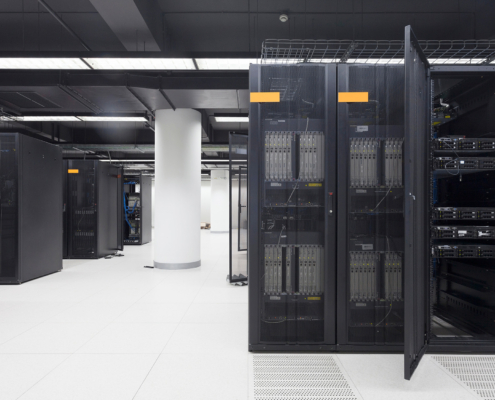 https://medlininc.com/wp-content/uploads/2023/05/What-You-Should-Do-Before-Switching-Managed-Service-Providers.jpg
1250
2000
AbstraktMarketing
/wp-content/uploads/2022/07/146-dbca58e9bf96d055f52912529ed0a163_REV1_LOGO_Medlin-300x78.png
AbstraktMarketing2023-05-25 09:00:002023-05-23 11:22:11What You Should Do Before Switching Managed Service Providers
https://medlininc.com/wp-content/uploads/2023/05/What-You-Should-Do-Before-Switching-Managed-Service-Providers.jpg
1250
2000
AbstraktMarketing
/wp-content/uploads/2022/07/146-dbca58e9bf96d055f52912529ed0a163_REV1_LOGO_Medlin-300x78.png
AbstraktMarketing2023-05-25 09:00:002023-05-23 11:22:11What You Should Do Before Switching Managed Service Providers https://medlininc.com/wp-content/uploads/2023/04/Image-of-a-business-person-walking-through-a-data-center-with-their-laptop..jpg
1250
2000
AbstraktMarketing
/wp-content/uploads/2022/07/146-dbca58e9bf96d055f52912529ed0a163_REV1_LOGO_Medlin-300x78.png
AbstraktMarketing2023-04-20 09:00:002024-01-15 09:19:02Co Managed vs Fully Managed IT Services
https://medlininc.com/wp-content/uploads/2023/04/Image-of-a-business-person-walking-through-a-data-center-with-their-laptop..jpg
1250
2000
AbstraktMarketing
/wp-content/uploads/2022/07/146-dbca58e9bf96d055f52912529ed0a163_REV1_LOGO_Medlin-300x78.png
AbstraktMarketing2023-04-20 09:00:002024-01-15 09:19:02Co Managed vs Fully Managed IT Services https://medlininc.com/wp-content/uploads/2023/04/Image-of-a-person-looking-at-code-on-a-computer.jpg
1250
2000
AbstraktMarketing
/wp-content/uploads/2022/07/146-dbca58e9bf96d055f52912529ed0a163_REV1_LOGO_Medlin-300x78.png
AbstraktMarketing2023-04-18 09:00:002024-01-14 21:08:28Evaluating a Managed Service Provider
https://medlininc.com/wp-content/uploads/2023/04/Image-of-a-person-looking-at-code-on-a-computer.jpg
1250
2000
AbstraktMarketing
/wp-content/uploads/2022/07/146-dbca58e9bf96d055f52912529ed0a163_REV1_LOGO_Medlin-300x78.png
AbstraktMarketing2023-04-18 09:00:002024-01-14 21:08:28Evaluating a Managed Service Provider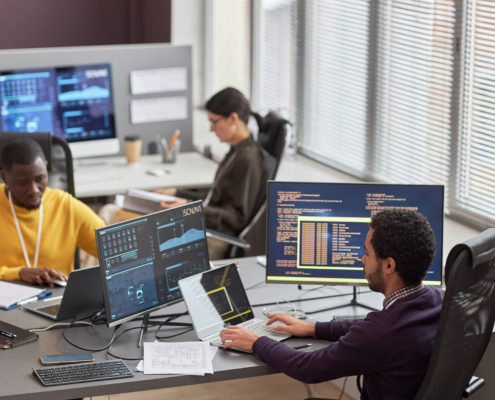 https://medlininc.com/wp-content/uploads/2023/04/Why-Outsource-your-IT-Support.jpg
1250
2000
AbstraktMarketing
/wp-content/uploads/2022/07/146-dbca58e9bf96d055f52912529ed0a163_REV1_LOGO_Medlin-300x78.png
AbstraktMarketing2023-04-06 09:00:002024-01-16 07:24:12Why Outsource your IT Support
https://medlininc.com/wp-content/uploads/2023/04/Why-Outsource-your-IT-Support.jpg
1250
2000
AbstraktMarketing
/wp-content/uploads/2022/07/146-dbca58e9bf96d055f52912529ed0a163_REV1_LOGO_Medlin-300x78.png
AbstraktMarketing2023-04-06 09:00:002024-01-16 07:24:12Why Outsource your IT Support https://medlininc.com/wp-content/uploads/2023/03/Law-regulation-and-compliance-rules-on-virtual-screen-concept.Businessman-working-at-laptop-computer-and-digital-documents-with-checkbox-lists._-1.jpg
1250
2000
AbstraktMarketing
/wp-content/uploads/2022/07/146-dbca58e9bf96d055f52912529ed0a163_REV1_LOGO_Medlin-300x78.png
AbstraktMarketing2023-03-23 09:00:502023-08-01 10:23:18The Essential Data Compliance Regulations Every Business Must Know
https://medlininc.com/wp-content/uploads/2023/03/Law-regulation-and-compliance-rules-on-virtual-screen-concept.Businessman-working-at-laptop-computer-and-digital-documents-with-checkbox-lists._-1.jpg
1250
2000
AbstraktMarketing
/wp-content/uploads/2022/07/146-dbca58e9bf96d055f52912529ed0a163_REV1_LOGO_Medlin-300x78.png
AbstraktMarketing2023-03-23 09:00:502023-08-01 10:23:18The Essential Data Compliance Regulations Every Business Must Know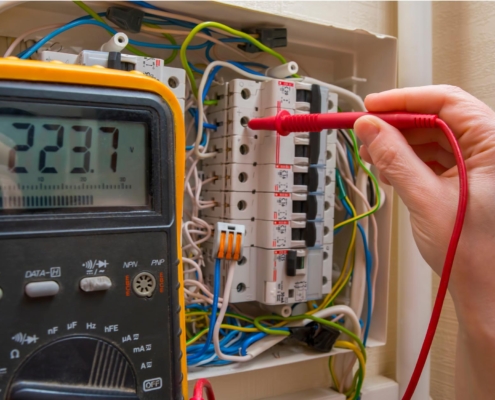 https://medlininc.com/wp-content/uploads/2023/02/Image-of-a-person-using-a-voltmeter-on-low-voltage-wiring.jpg
1250
2000
AbstraktMarketing
/wp-content/uploads/2022/07/146-dbca58e9bf96d055f52912529ed0a163_REV1_LOGO_Medlin-300x78.png
AbstraktMarketing2023-03-02 09:00:002023-02-28 23:12:17Low Voltage Wiring Basics
https://medlininc.com/wp-content/uploads/2023/02/Image-of-a-person-using-a-voltmeter-on-low-voltage-wiring.jpg
1250
2000
AbstraktMarketing
/wp-content/uploads/2022/07/146-dbca58e9bf96d055f52912529ed0a163_REV1_LOGO_Medlin-300x78.png
AbstraktMarketing2023-03-02 09:00:002023-02-28 23:12:17Low Voltage Wiring Basics https://medlininc.com/wp-content/uploads/2023/02/Two-workers-talking-about-Hardware-as-a-Service.jpg
1250
2000
AbstraktMarketing
/wp-content/uploads/2022/07/146-dbca58e9bf96d055f52912529ed0a163_REV1_LOGO_Medlin-300x78.png
AbstraktMarketing2023-02-15 09:00:002023-02-14 12:37:30A Quick Guide to Hardware as a Service
https://medlininc.com/wp-content/uploads/2023/02/Two-workers-talking-about-Hardware-as-a-Service.jpg
1250
2000
AbstraktMarketing
/wp-content/uploads/2022/07/146-dbca58e9bf96d055f52912529ed0a163_REV1_LOGO_Medlin-300x78.png
AbstraktMarketing2023-02-15 09:00:002023-02-14 12:37:30A Quick Guide to Hardware as a Service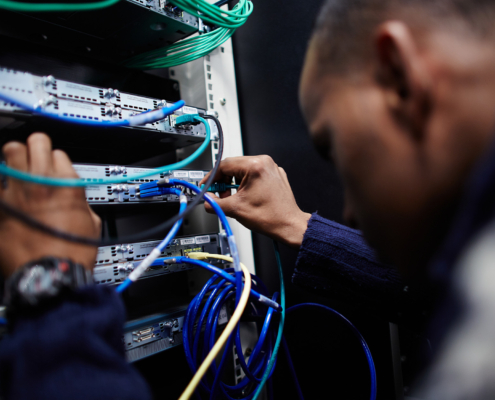 https://medlininc.com/wp-content/uploads/2023/01/Leasing-vs-Buying-Equipment_-Our-Guide.jpg
1250
2000
Ike Oji
/wp-content/uploads/2022/07/146-dbca58e9bf96d055f52912529ed0a163_REV1_LOGO_Medlin-300x78.png
Ike Oji2023-01-19 09:00:002023-01-06 12:00:20Buy or Lease Hardware?
https://medlininc.com/wp-content/uploads/2023/01/Leasing-vs-Buying-Equipment_-Our-Guide.jpg
1250
2000
Ike Oji
/wp-content/uploads/2022/07/146-dbca58e9bf96d055f52912529ed0a163_REV1_LOGO_Medlin-300x78.png
Ike Oji2023-01-19 09:00:002023-01-06 12:00:20Buy or Lease Hardware? https://medlininc.com/wp-content/uploads/2023/01/What-is-Hardware-as-a-Service.jpg
1250
2000
Ike Oji
/wp-content/uploads/2022/07/146-dbca58e9bf96d055f52912529ed0a163_REV1_LOGO_Medlin-300x78.png
Ike Oji2023-01-16 09:00:002023-01-06 11:46:48What is Hardware as a Service?
https://medlininc.com/wp-content/uploads/2023/01/What-is-Hardware-as-a-Service.jpg
1250
2000
Ike Oji
/wp-content/uploads/2022/07/146-dbca58e9bf96d055f52912529ed0a163_REV1_LOGO_Medlin-300x78.png
Ike Oji2023-01-16 09:00:002023-01-06 11:46:48What is Hardware as a Service?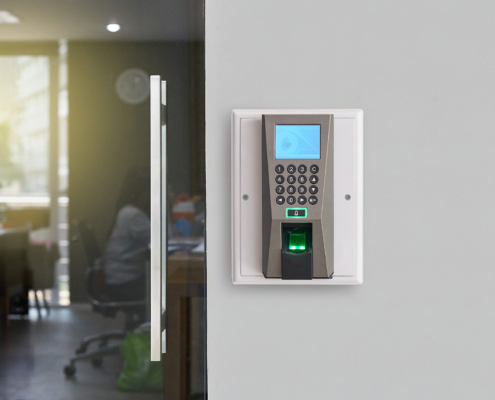 https://medlininc.com/wp-content/uploads/2023/01/Security-System-on-Wall-in-Office.jpg
1250
2000
Ike Oji
/wp-content/uploads/2022/07/146-dbca58e9bf96d055f52912529ed0a163_REV1_LOGO_Medlin-300x78.png
Ike Oji2023-01-12 09:00:002023-08-01 10:22:48What are Integrated Security Systems?
https://medlininc.com/wp-content/uploads/2023/01/Security-System-on-Wall-in-Office.jpg
1250
2000
Ike Oji
/wp-content/uploads/2022/07/146-dbca58e9bf96d055f52912529ed0a163_REV1_LOGO_Medlin-300x78.png
Ike Oji2023-01-12 09:00:002023-08-01 10:22:48What are Integrated Security Systems?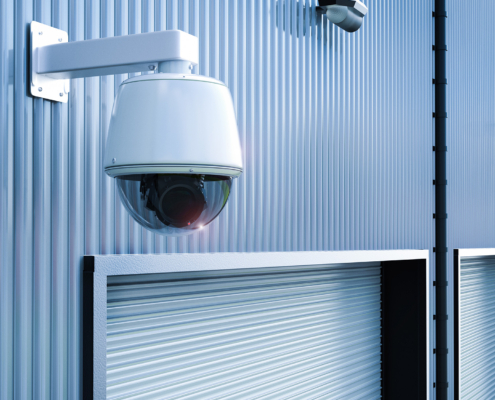 https://medlininc.com/wp-content/uploads/2023/01/How-to-Improve-Warehouse-Security.jpg
1250
2000
Ike Oji
/wp-content/uploads/2022/07/146-dbca58e9bf96d055f52912529ed0a163_REV1_LOGO_Medlin-300x78.png
Ike Oji2023-01-09 09:00:002023-01-06 09:05:04How to Improve Warehouse Security
https://medlininc.com/wp-content/uploads/2023/01/How-to-Improve-Warehouse-Security.jpg
1250
2000
Ike Oji
/wp-content/uploads/2022/07/146-dbca58e9bf96d055f52912529ed0a163_REV1_LOGO_Medlin-300x78.png
Ike Oji2023-01-09 09:00:002023-01-06 09:05:04How to Improve Warehouse Security https://medlininc.com/wp-content/uploads/2022/11/View-of-network-cables-plugged-into-switch.jpg
1250
2000
hpfeil
/wp-content/uploads/2022/07/146-dbca58e9bf96d055f52912529ed0a163_REV1_LOGO_Medlin-300x78.png
hpfeil2022-11-17 09:52:292023-04-12 16:47:34What’s the Difference Between Cat5 and Cat6?
https://medlininc.com/wp-content/uploads/2022/11/View-of-network-cables-plugged-into-switch.jpg
1250
2000
hpfeil
/wp-content/uploads/2022/07/146-dbca58e9bf96d055f52912529ed0a163_REV1_LOGO_Medlin-300x78.png
hpfeil2022-11-17 09:52:292023-04-12 16:47:34What’s the Difference Between Cat5 and Cat6?This site uses cookies. By continuing to browse the site, you are agreeing to our use of cookies.
AcceptLearn moreWe may request cookies to be set on your device. We use cookies to let us know when you visit our websites, how you interact with us, to enrich your user experience, and to customize your relationship with our website.
Click on the different category headings to find out more. You can also change some of your preferences. Note that blocking some types of cookies may impact your experience on our websites and the services we are able to offer.
These cookies are strictly necessary to provide you with services available through our website and to use some of its features.
Because these cookies are strictly necessary to deliver the website, refusing them will have impact how our site functions. You always can block or delete cookies by changing your browser settings and force blocking all cookies on this website. But this will always prompt you to accept/refuse cookies when revisiting our site.
We fully respect if you want to refuse cookies but to avoid asking you again and again kindly allow us to store a cookie for that. You are free to opt out any time or opt in for other cookies to get a better experience. If you refuse cookies we will remove all set cookies in our domain.
We provide you with a list of stored cookies on your computer in our domain so you can check what we stored. Due to security reasons we are not able to show or modify cookies from other domains. You can check these in your browser security settings.
We also use different external services like Google Webfonts, Google Maps, and external Video providers. Since these providers may collect personal data like your IP address we allow you to block them here. Please be aware that this might heavily reduce the functionality and appearance of our site. Changes will take effect once you reload the page.
Google Webfont Settings:
Google Map Settings:
Google reCaptcha Settings:
Vimeo and Youtube video embeds:
